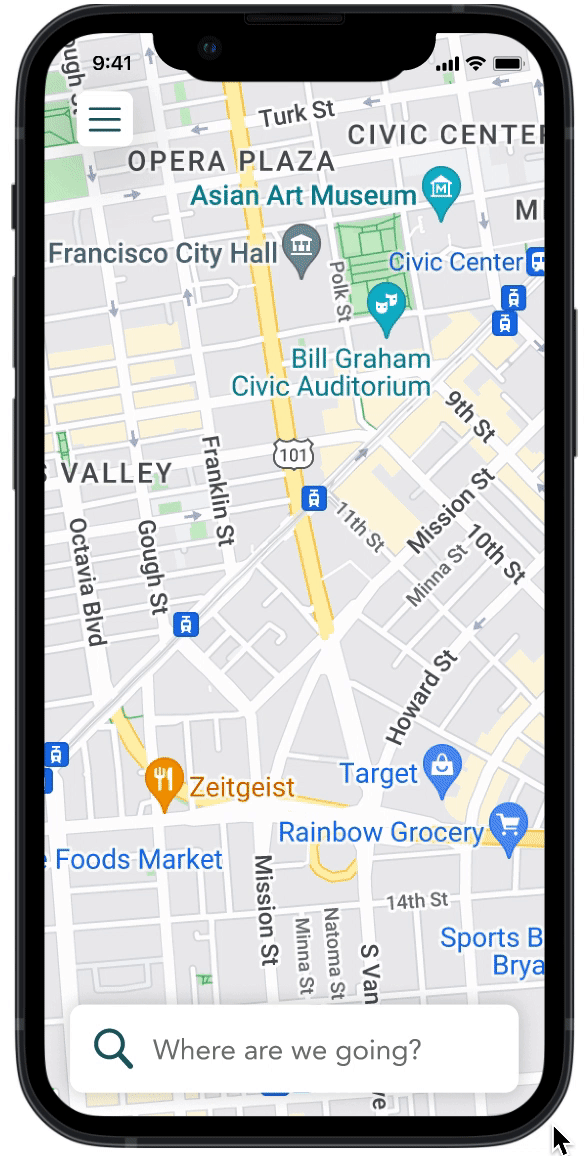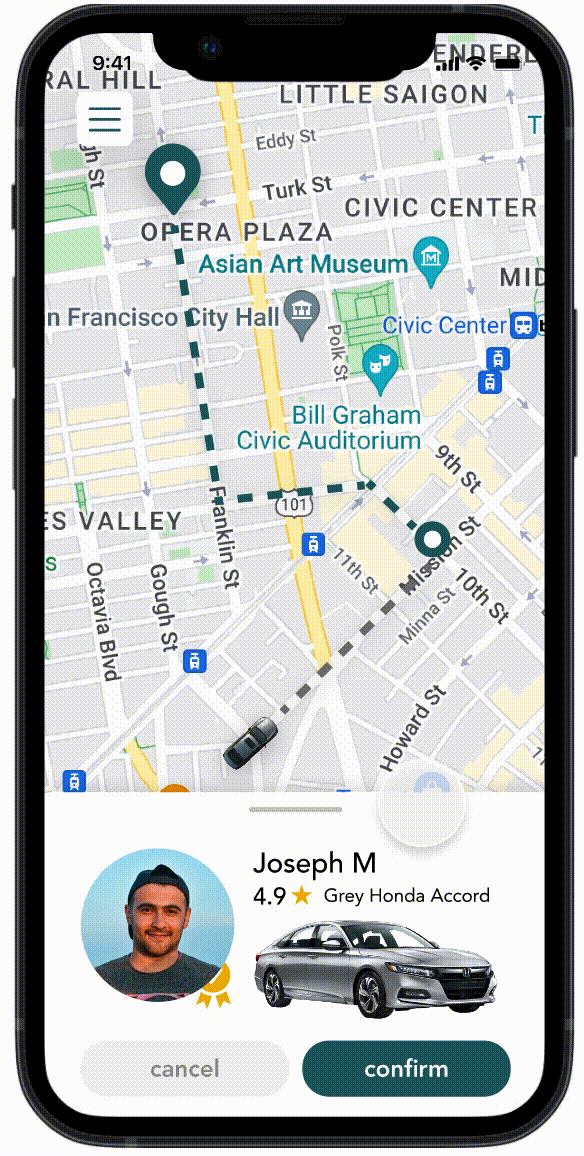Ride
UX Research and Product Design, 2022
Thousands of wheelchair users get stranded on the streets each year due to the lack of accommodations in our transportation system.
To tackle this problem, I designed Ride, an accessible transportation solution for users with mobility issues. Designed and tested with individuals in wheelchairs, Ride provides all the information one needs to reach their destination with confidence and ease.
Interact with my prototype on Figma
Role: UX Lead, Product Manager
We developed Ride into a web app! View Here
The Problem & The Solution

Unreliable
in 2016, nearly 32,000 Access-A-Ride customers had been stranded
Prove Credibility
require drivers to complete accessibility trainings, ensure accountability with reviews and rating

Inconvenient
riders need to check multiple apps and websites before their commute
All in One
riders have all the information they need for all their transit options, all in one app

Safety Concerns
riders often have to navigate inaccessible roads after being dropped off
Accessibility Check
Utilize Google streetview to help riders familiarize with their drop-off locations
High-fidelity wireframes



Scheduling
By inputting a destination and scheduling a ride, the app will display the costs and estimated wait times of all possible travel methods, helping customers compare all options for varying traveling needs.
Arrival
Informative pages on drivers' accessibility training ensure credibility and options to rate the driver are available after drop-offs.
On the road
For public transit, the application will display elevator status and the best subway car to get on to maximize convenience. For private transits, the application will suggest drop-off locations that are the most accessible to ensure customers feel safe and comfortable even after the ride.

Onboarding
New users will be prompted with an on-boarding process which asks for their personal information, along with the option of inputting their Access-a-Ride ID. After verifying the ID, they will be able to hail reduced-fare vehicles offered by the MTA. Regular users who don’t qualify for AAR (for example, the elderly or temporary injured), can also enjoy this app, just without the discounts.

Appendix
User Research
Statistics on travel patterns for people with travel-limiting disabilities
25.5 million Americans age 5 and older have self-reported travel-limiting disabilities, and 7 out of 10 people with travel-limiting conditions reduce their day-to-day travel because of their disabilities.
People aged 18 to 64 with disabilities report using a range of strategies to compensate for transportation limitations. These strategies include:
-
Asking others for rides (44.3 percent)
-
Limiting travel to daytime (22.6 percent)
-
Using special transportation services such as Dial-a-Ride or reduced-fare taxis (12.3 percent)
On-going issues with Paratransit services
-
drivers with poor accessibility training
-
long wait times and arrival delays
-
lack of flexibility in terms of trip planning
On-going issues with accessible options in ride-sharing apps
-
Uber’s “UberWAV” feature and Lyft’s “Access Mode” located available accessible vehicles in only 26% of attempts combined, while they located non-accessible vehicles 100% of the time.
-
WAV rides had an estimated wait time of 17 minutes, versus a 4-minute estimated wait for regular service.
-
Lyft offered discounted prices for inaccessible vehicles and did not offer those discounts to wheelchair users.

